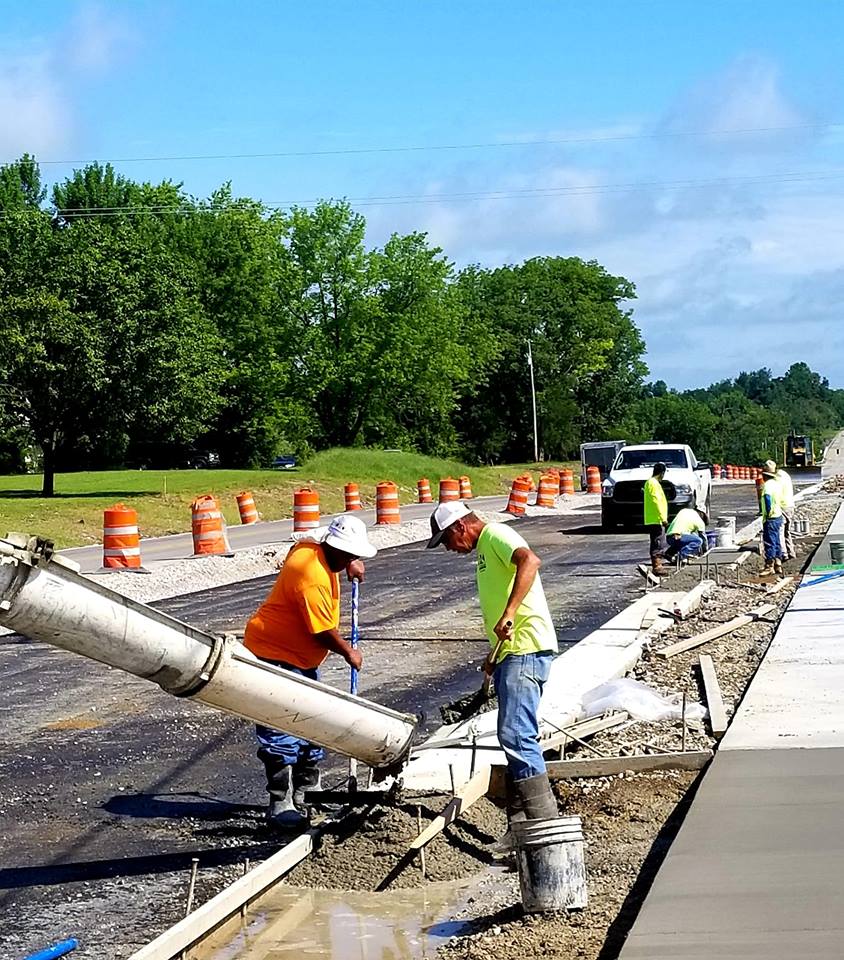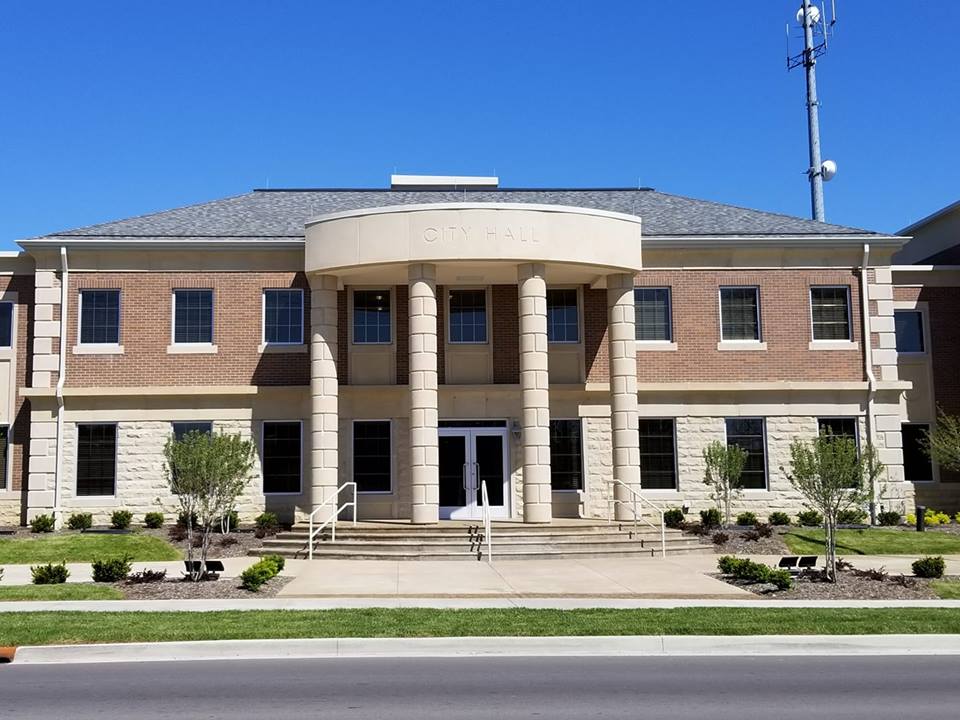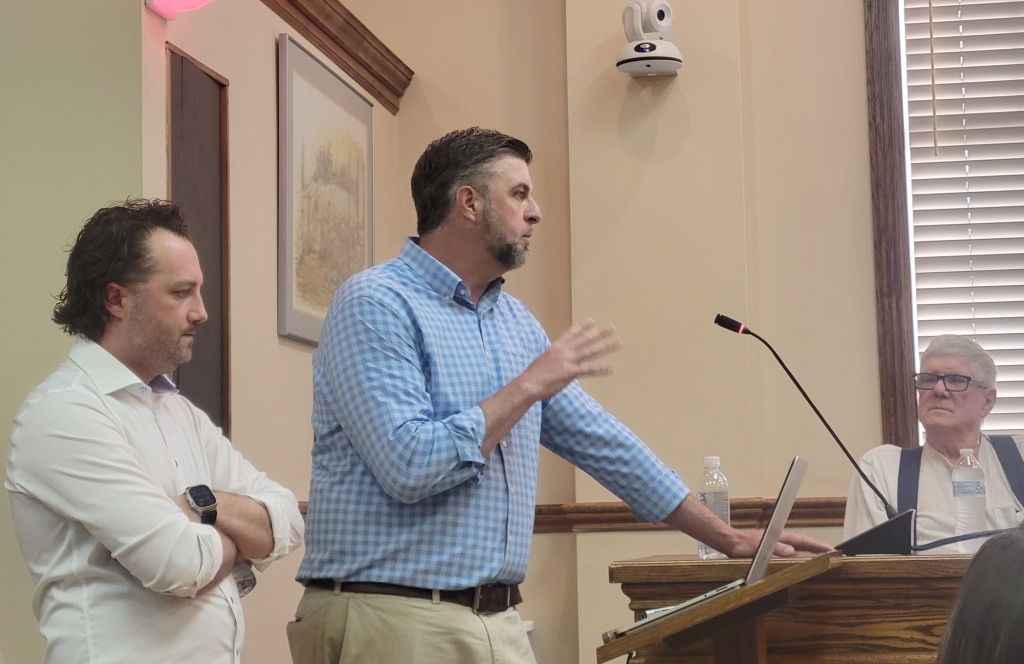
Who is responsible for streets, curbs, and other infrastructure in the greater Berea area? It’s not always clear, as Berea City Councilman Jerry Little pointed out Tuesday night. Little raised the issue during a report about the activities of the city’s Public Works Committee.
In recent months, one group of citizens has complained that the city is not maintaining its infrastructure, Little said. But some of the time, the infrastructure in question is not actually the responsibility of the City of Berea, he added. He noted that some infrastructure, for example, is on private property. Or, in some cases, property has been annexed into the city, but the city does not have easements to work on issues like drainage, said Little. That can lead to confusion among the public. “Sometimes the city gets blamed for things that are out of our control,” Little noted.
As chair of the Public Works Committee, Little said much of Berea’s infrastructure is aging, but that the city is making an effort to keep up. “We can’t take care of all the problems. We try to take care of what is most needed, because we just don’t have the manpower to take care of everything,” Little said.
Little recommended devising a new system for handing infrastructure complaints, then recording and prioritizing them. In the meantime, he urged patience. “We’re trying to do the best job we can and we’re trying to address all the problems. Just try to work with us and we’ll try to work with you to get things done.”
According to a report released last year, the City of Berea has invested over $20 million in major infrastructure projects since 1997, including upgrading the city parks and improving roadways in the industrial park.
| CITY OF BEREA MAJOR PROJECTS | |||
| PROJECT DATE | PROJECT DESCRIPTION | FINAL PRICE | |
| 1993 | Berea Community Park | $ 2,300,000.00 | |
| 1993 | Intergenerational Building | $ 350,000.00 | |
| 1995 | Landfill Closure | $ 4,000,000.00 | |
| 1998 | Sidewalk Project (Various) | $ 93,077.99 | |
| 1998 | Valley/Boone St. Drainage | $ 112,725.50 | |
| 1998 | Forest St. Drainage Project | $ 48,347.96 | |
| 1999 | Glades/1016 Intersection | $ 225,032.00 | |
| 1999 | City Hall Renovation | $ 500,000.00 | |
| 2000 | Post Office Renovation | $ 903,507.77 | |
| 2001 | Glades Road Reconstruction | $ 1,834,261.75 | |
| 2002 | Logston Lane Reconstruction | $ 119,613.38 | |
| 2002 | N. Broadway Reconstruction | $ 737,508.12 | |
| 2002 | Intergenerational classroom add. | $ 102,280.00 | |
| 2003 | Boone Street | $ 190,112.12 | |
| 2003 | Ball Field Refurbish | $ 73,723.05 | |
| 2004 | Shirley Street Reconstruction | $ 95,434.75 | |
| 2004 | Glades/Rash Rd. traffic signal | $ 49,000.00 | |
| 2004 | Ellipse/Jefferson Traffic Signal | $ 33,345.00 | |
| 2005 | Utility and Public Works Build. | $ 655,000.00 | |
| 2005 | Park Storage Bldg. and Office | $ 49,900.00 | |
| 2006 | Maintenance Garage | $ 185,810.00 | |
| 2006 | Blythe Court Reconstruction | $ 99,223.00 | |
| 2007 | Shortline Pike Reconstruction | $ 405,315.75 | |
| 2007 | Chestnut Street Park | $ 331,698.00 | |
| 2007 | Forest /Center Street Intersec. | $ 54,287.00 | |
| 2007 | Boone Street Improvements | $ 238,000.00 | |
| 2008 | McKinney Right Turn Lane | $ 23,538.65 | |
| 2008 | Berea Industrial Sewer Line | $ 286,626.96 | |
| 2008 | Industrial Pk. Rd. (Farristown) | $ 874,805.00 | |
| 2008 | Jane Street Connector | $ 184,205.90 | |
| 2008 | Mayde Road Reconstruction | $ 2,339,900.00 | |
| 2009 | 1016 Sidewalk (Cemetery Hill) | $ 139,515.75 | |
| 2010 | Park Expansion Contract #1 | $ 1,049,999.75 | |
| 2010 | Park Expansion Contract #2 | $ 651,610.40 | |
| 2010 | Park Expansion Contract #3 | $ 162,926.00 | |
| 2010 | Prospect St. Reconstruction | $ 2,253,978.00 | |
| 2011 | Welcome Center Renovation | $ 535,352.00 | |
| 2011 | Baldwin Street Bridge | $ 36,509.00 | |
| 2011 | Folk Center Roof | $ 118,836.00 | |
| 2012 | Shortline Pike Extension | $ 179,223.88 | |
| 2012 | Menelaus Pike Design | $ 414,005.00 | |
| 2013 | Mayde Road Bike Path | $ 109,415.00 | |
| 2013 | Prospect Street Lighting | $ 26,203.00 | |
| 2013 | Folk Center Kitchen | $ 81,294.00 | |
| 2013 | Menelaus Road Utility relocate | $ 77,137.76 | |
| 2014 | Bratcher Lane Reconstruction | $ 1,074,733.25 | |
| 2014 | Pumphouse Chemical add. | $ 11,615.00 | |
| 2014 | Indian Fort Trail and Bridge | $ 377,631.00 | |
| 2015 | Water Street Drainage | $ 291,183.26 | |
| 2017 | Richmond Road Design | $ 687,883.00 | |
| 2016 | Ford Building Renovation | $ 33,185.00 | |
| 2016 | Food Bank Addition | $ 76,042.00 | |
| 2016 | Salt Bin Expansion | $ 17,702.00 | |
| 2016 | County Clerk Renovation | $ 101,301.00 | |
| 2017 | Cumberland/Hughes Street | $ 277,585.00 | |
| 2018 | Filtration refurbish | $ 40,000.00 | |
| 2018 | Splash Pad at Berea Pool | $ 225,000.00 | |
| 2018 | Berea Community Stadium | $ 225,000.00 | |
| TOTAL | $ 26,771,145.70 | ||
| 1997- Present Total | $ 20,121,145.70 | ||



